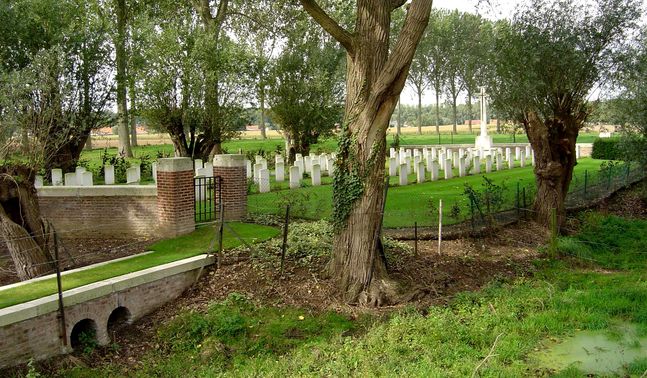Herbert Finnigan
Date of birth: 1889
Date of death: 19.12.1915
Area: Outwood
Regiment: King's Own Yorkshire Light Infantry
Family information: Son of Thomas and Harriet Finnigan
Rank: Sergeant
Service number: 287
War Service
At the beginning of August 1914 the 4th KOYLI, a Territorial Force, was at their summer camp. However, with war imminent they returned to Wakefield for mobilisation, which came on the 4th August, when war was declared. On the 10th August, the 4th Battalion, later to be renamed 1/4th Battalion, moved to Doncaster racecourse, where the 1st West Riding Brigade, 1st West Riding Division was assembling. They later moved to Sandbeck Park and to Gainsborough, from where they had a short spell of coastal defence work. On 26th February the battalion moved to York, were it stayed until proceeding overseas to join the British Expeditionary Force.
Herbert Finnigan, along with his battalion, the 1/4th KOYLI, left York by train on 13th April 1915, bound for Folkestone, where ships were boarded for passage to Boulogne. On the 14th April, after linking up with the transports, the battalion moved from Merville to Doulieu. In this area the Brigade received two weeks trench warfare familiarisation training, before being deployed in the Bois Grenier sector. On 28th April, the 1/4th KOYLI entered the line near Fleurbaix. The following month the 1st West Riding Brigade was designated 148th Infantry Brigade, 49th (West Riding) Division.
148th Brigade remained in the Bois Grenier sector until 26th June 1915, when they were withdrawn to Watou. The 1/4th KOYLI had 27 men killed, or died from wounds, during their first tour in the trenches.
On 9th July 1915, the 49th Division, left Watou and moved into the sector between Ypres and Boesinghe. This position was the left of the British Army line in Flanders. Throughout the summer, the men of the 49th Division were engaged in constructing and repairing trenches and strong points, which were constantly shelled by the enemy artillery. After heavy rain, the trenches filled with water and the ground became a quagmire. As winter approached and the weather turned colder, standing for long periods in water resulted in trench foot becoming a problem.
In early December, intelligence reported that gas cylinders had been placed along the German front, opposite the 49th Division positions. Immediately training in the use of gas helmets was intensified, in preparation for a possible attack. The gas attack came at 05.00 hrs, on 19th December, when the 1/4th KOYLI were in the front line. The men in the front line were immediately alert to the danger and successfully stopped incursions by enemy patrols. At 06.15 hrs, when the 1/4th Battalion were being relieved, the enemy laid down a bombardment using shells filled with Phosgene gas. This was the first time this type of gas had been used. Such was the concentration of Phosgene, that the helmets worn by the troops were not adequate, resulting in many casualties.
Sergeant Herbert Finnigan, a signalling sergeant, was one of those who died as a result of this attack. He raised the alarm at Battalion headquarters and managed to keep communications open with all the companies, before succumbing to the gas. Although taken to a Dressing Station, he died the same day and is buried at Hospital Farm Cemetery, near Ypres. This cemetery now contains 115 Commonwealth and French burials from the First World War.
Family Life
Herbert Finnigan was born on 29th September 1889, the fifth son of Thomas and Harriet Finnigan, Check Weighman, of Bridge Cottages, Outwood. On 19th December 1889 he was baptised at St Mary Magdalene Church, Outwood, and was to maintain his connection with this church throughout his life. A qualified carpenter, Herbert also played as three-quarter with Wakefield Trinity Football Club. He had joined the Wakefield Territorial Force in 1908.
 Hospital Farm Cemetery
Hospital Farm Cemetery

